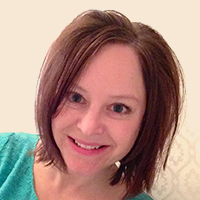Diversity is a Gift: A Conversation with Author Rachel Werner
Diversity is a Gift: A Conversation with Author Rachel Werner
As an acquisitions editor, I have the privilege of reading incredible stories every day. However, finding the right fit for our pub list can be a challenge. Four lines into Rachel Werner’s story about the Fillmore District in San Francisco, I knew this book was perfect for Capstone. I read it over and over, finding the lyrical and flowing text more beautiful each time.
From music to art to poetry, creativity filled the air in the Fillmore District. The creativity and inclusion brought communities together—with no exceptions. Everyone was welcome, and everyone was accepted.
Capstone strives to provide inclusive and diverse stories for everyone. Moving and Grooving to Fillmore’s Beat showcases those elements and more. I spoke with Rachel about her upcoming picture book (publishing August 2023) and the importance of the Fillmore District.
There are many historic places to write about. Why did you write about the Fillmore District?
Although I consider the Midwest to be “home” (since it’s the region I have resided in the longest off and on throughout my life), I am originally from Southern California. And prior to the COVID-19 pandemic, it was pretty typical for me to travel there at least once a year. So, the Fillmore Auditorium was a place I had heard of, but it wasn’t until I came across a reference which revealed this neighborhood was once considered the “Harlem of the West” that I got interested enough to start doing my own research.
The Fillmore District is a wonderful representation of inclusion and multi-ethnic history. Why do you think it’s important to highlight these themes in children’s books?
I think there needs to be more literature (for all ages) that centers on inclusive communities and intersectionality. Because if the desire is for transformative justice and allyship to really take root, people need to know these are not new concepts…nor an unachievable way of living.
From poetry to music to art, the Fillmore was a hub for creativity and inspiration. As a creator, what inspires you?
Real life—especially the types of stories which don’t frequently get authentic representation via mainstream narratives. For example, one of my current works in progress for younger readers involves homelessness.
From Etta James to Maya Angelou, a long list of famous people performed at the Fillmore Auditorium. If you could pick just one, who would you want to see perform?
I think it would have been incredible to be alive (and old enough at the time) to see the legendary blues performer and songwriter B.B. King. Same goes for Sugar Pie DeSanto, a singer who at the peak of her career was best known for sensational dance moves—a talent I can very much appreciate since dancing has always been a passion of mine too.
Your book takes us through many decades in history. Why is the history of the Fillmore District important?
Although such peaceful cohabitation between different races, ethnicities, and religions may have been a rarity at the time in the United States, the Fillmore serves as a historical example of what was—and still is—possible.
Learning about history helps us shape our future. Is there a historic place you would like to visit or learn more about?
Yes! Istanbul is one locale at the top of my travel bucket list. The city (and the area surrounding it) was a much valued territory within several ancient empires. I am most interested in seeing stunning religious architecture like the Hagia Sophia (now a UNESCO World Heritage site) in addition to the Seraglio (Topkapı Palace), which was the primary residence of all of the Ottoman sultans until the mid-19th century.
What do you hope readers will take away from your book?
A variety of artists grew up by or eventually came to have a deep connection to the Fillmore District. These individuals found common ground with one another; imprinted the importance of creative license and community-building upon their children; and later upon those who celebrated their work. Differences among neighbors can strengthen a community if we’re open to constructive dialogue drawing us into collaboration. Truly—in the absence of fear, ignorance, and inequity—diversity can be a gift to us all.
Preview Moving and Grooving to Fillmore's Beat
Download Educator's Guide for Moving and Grooving to Fillmore's Beat
